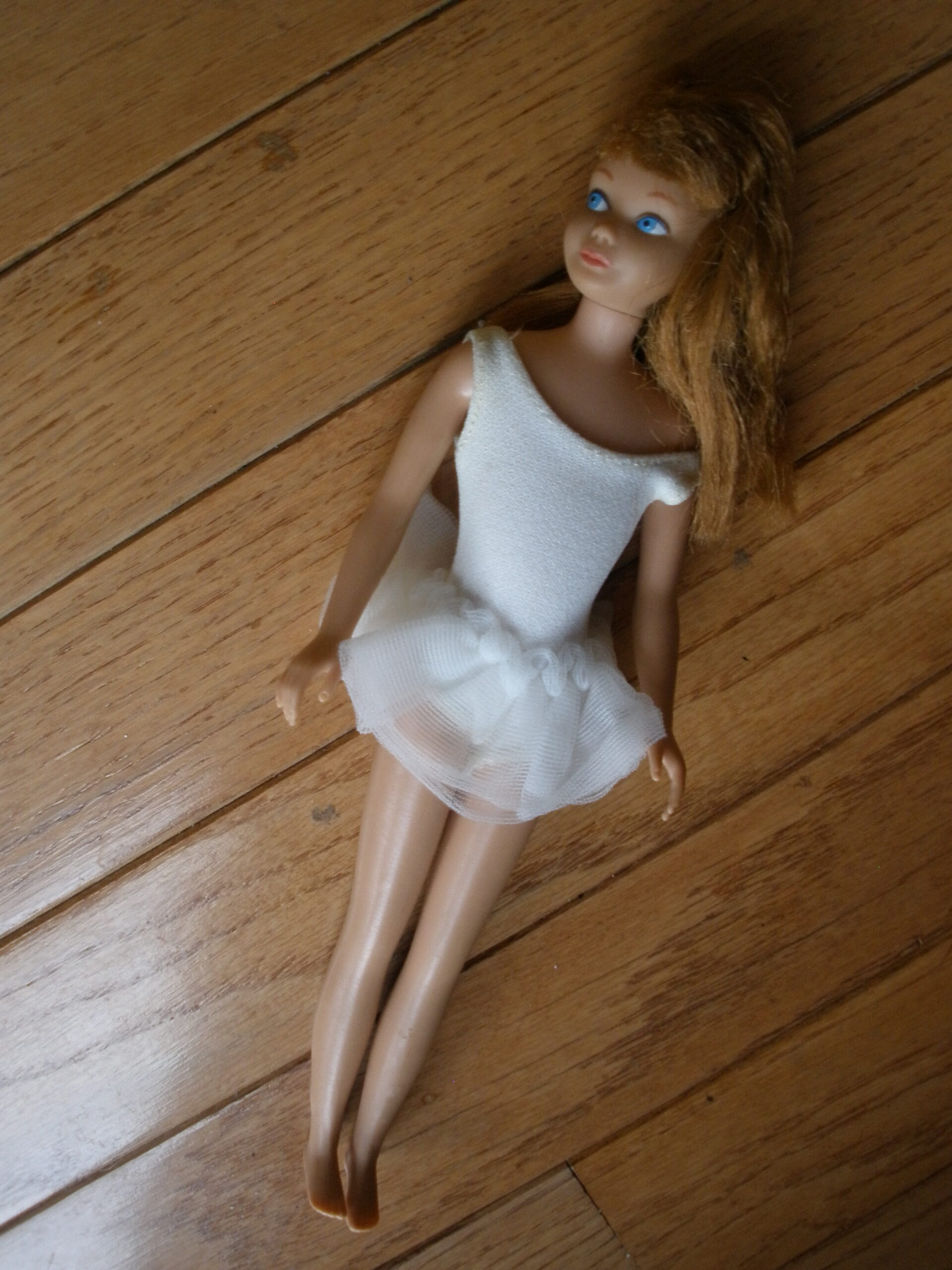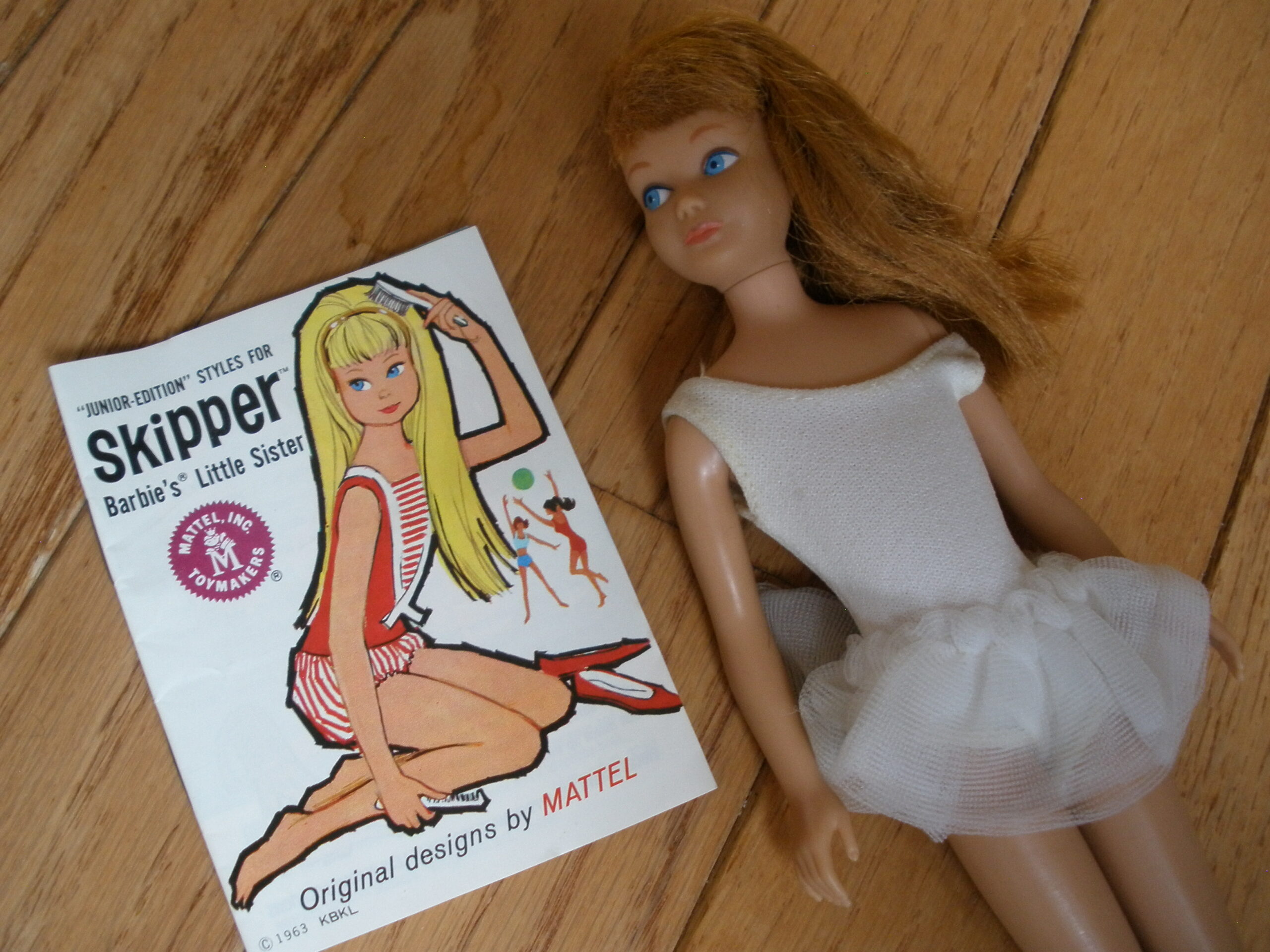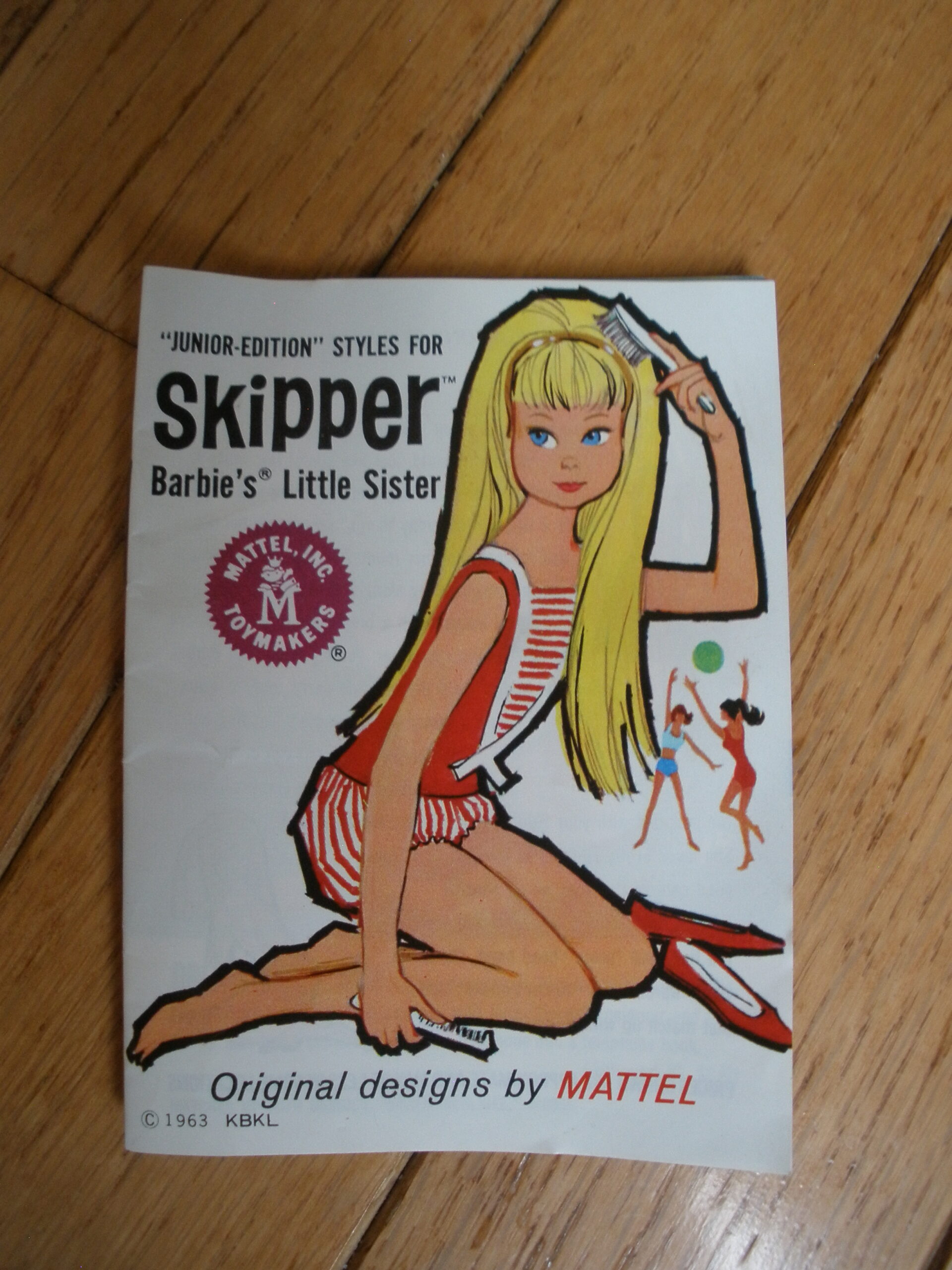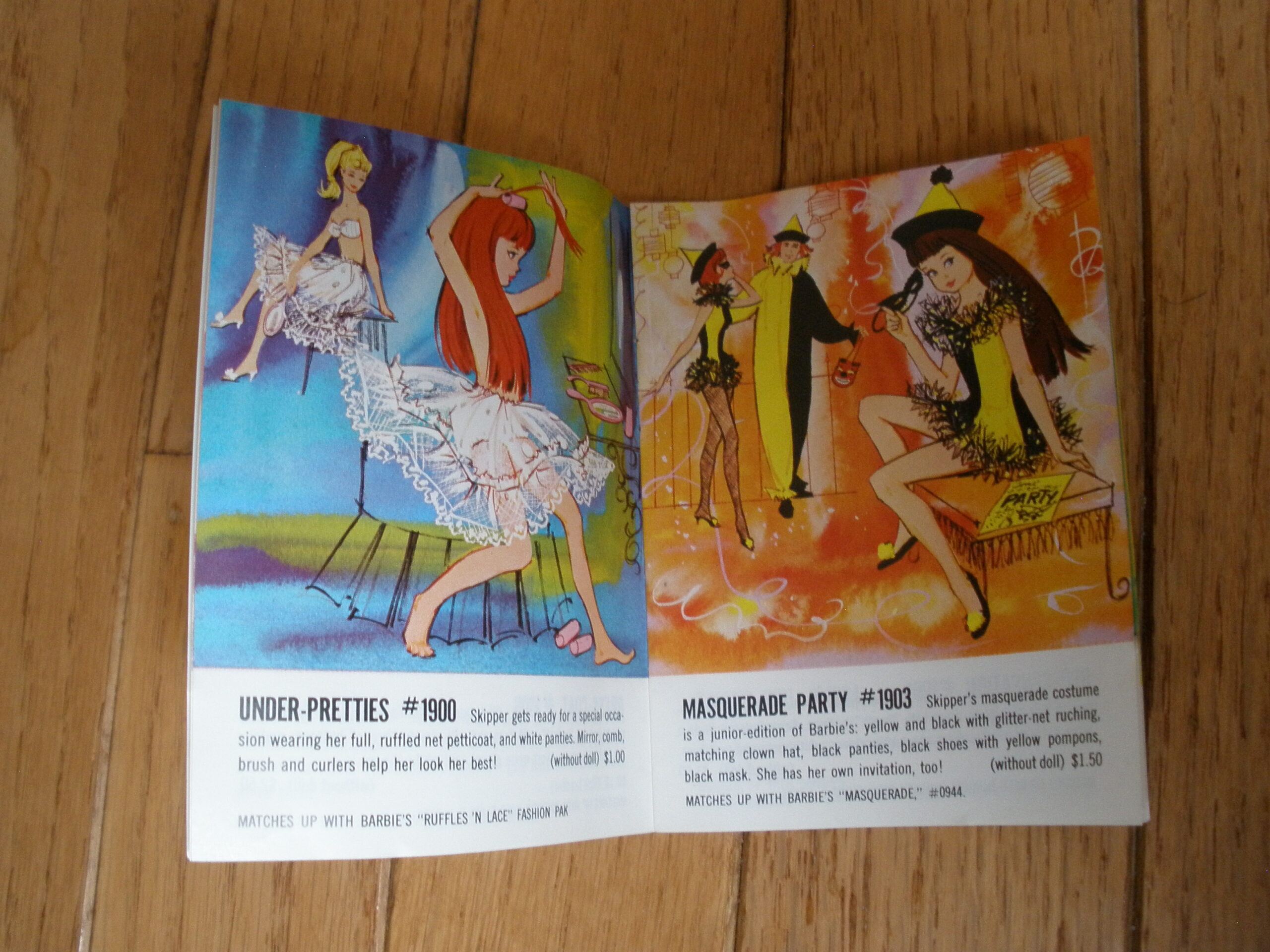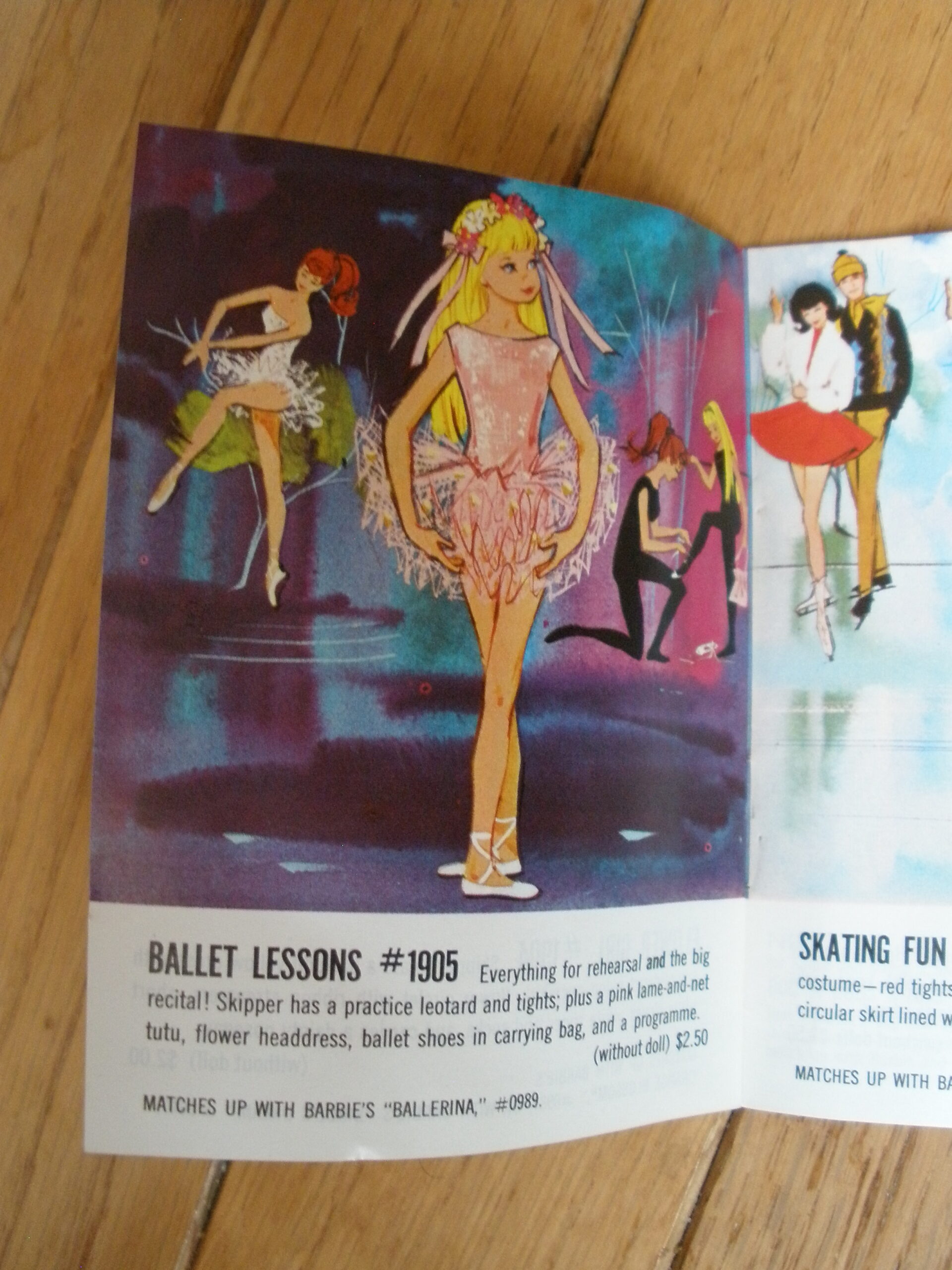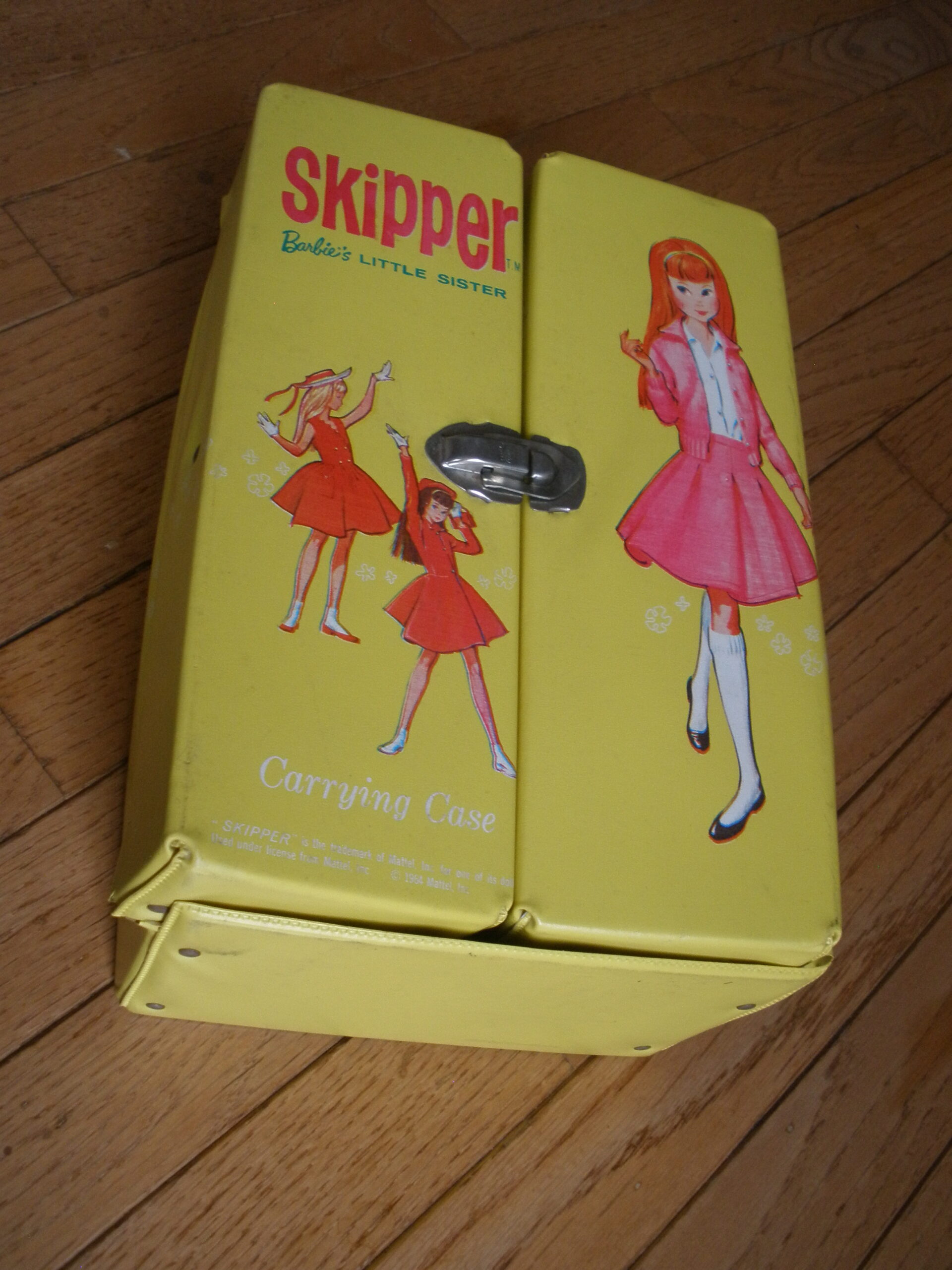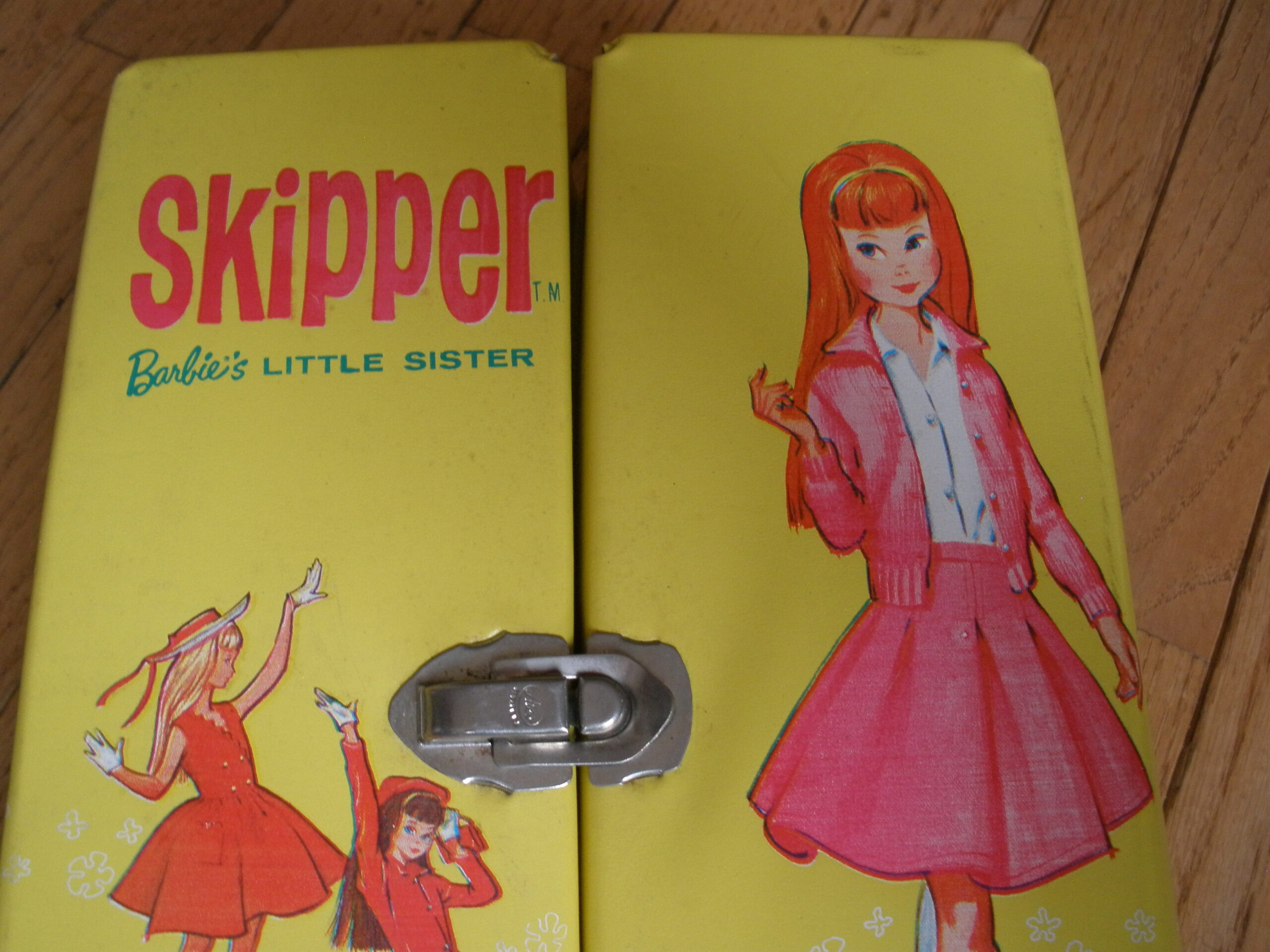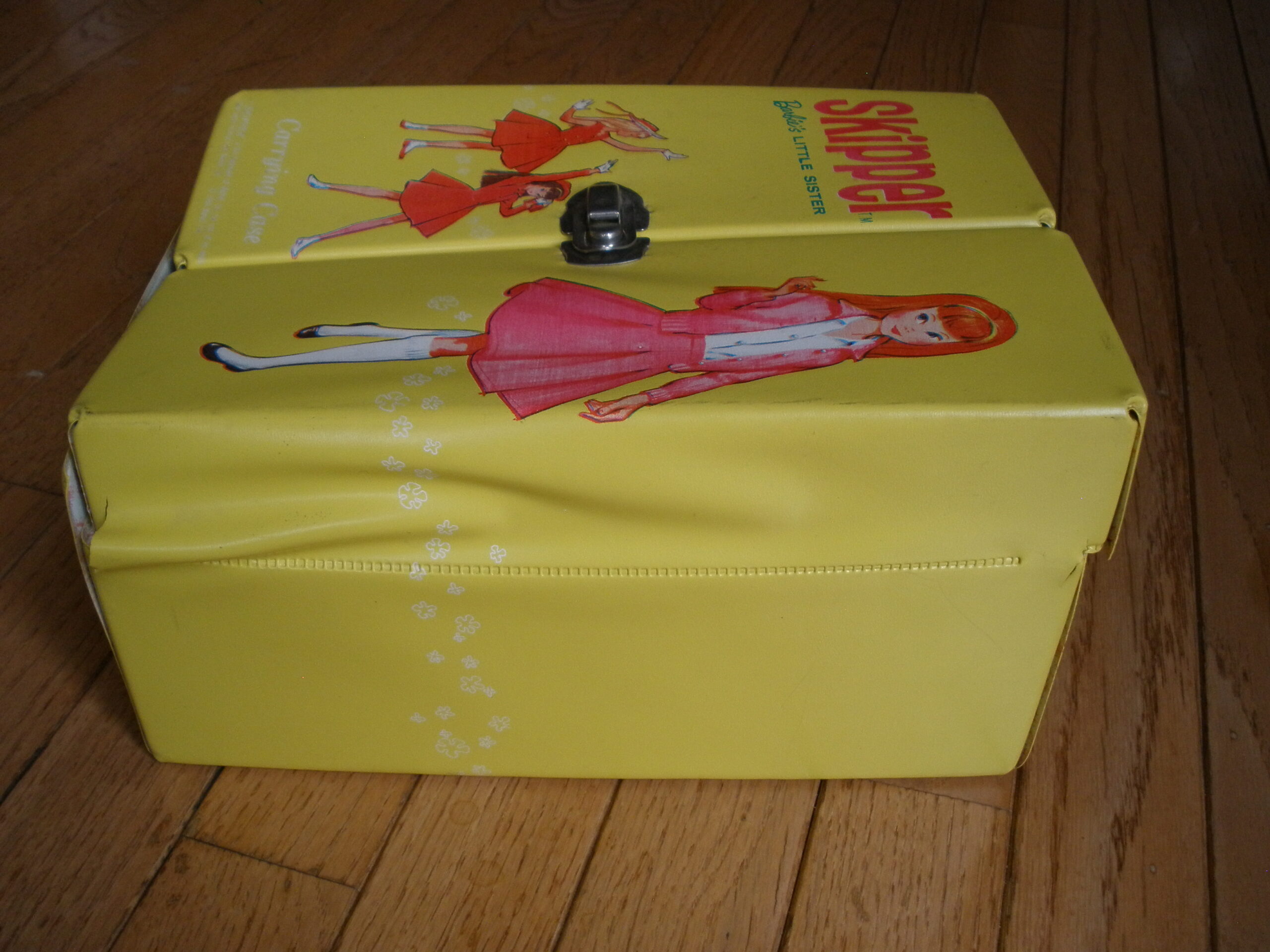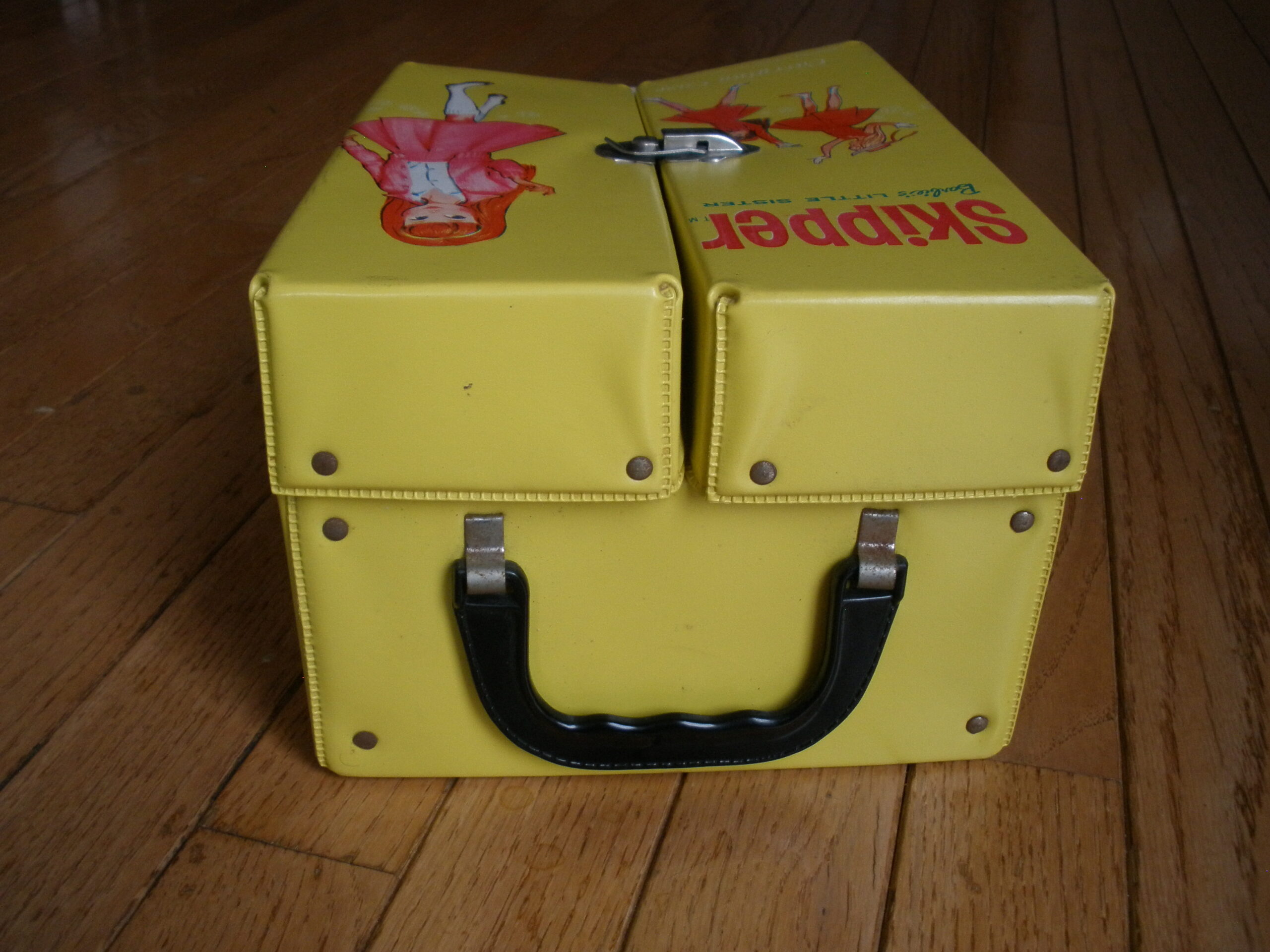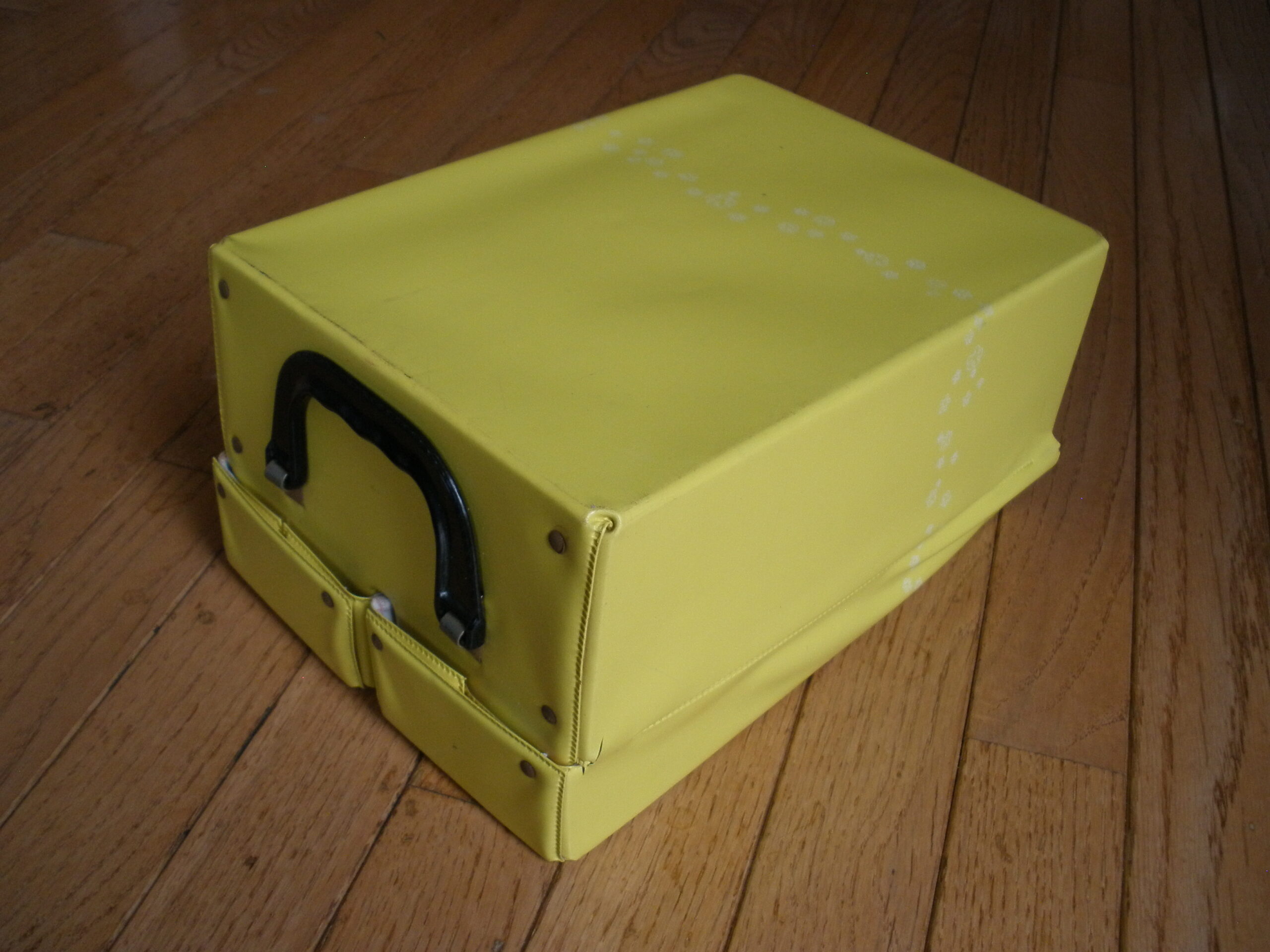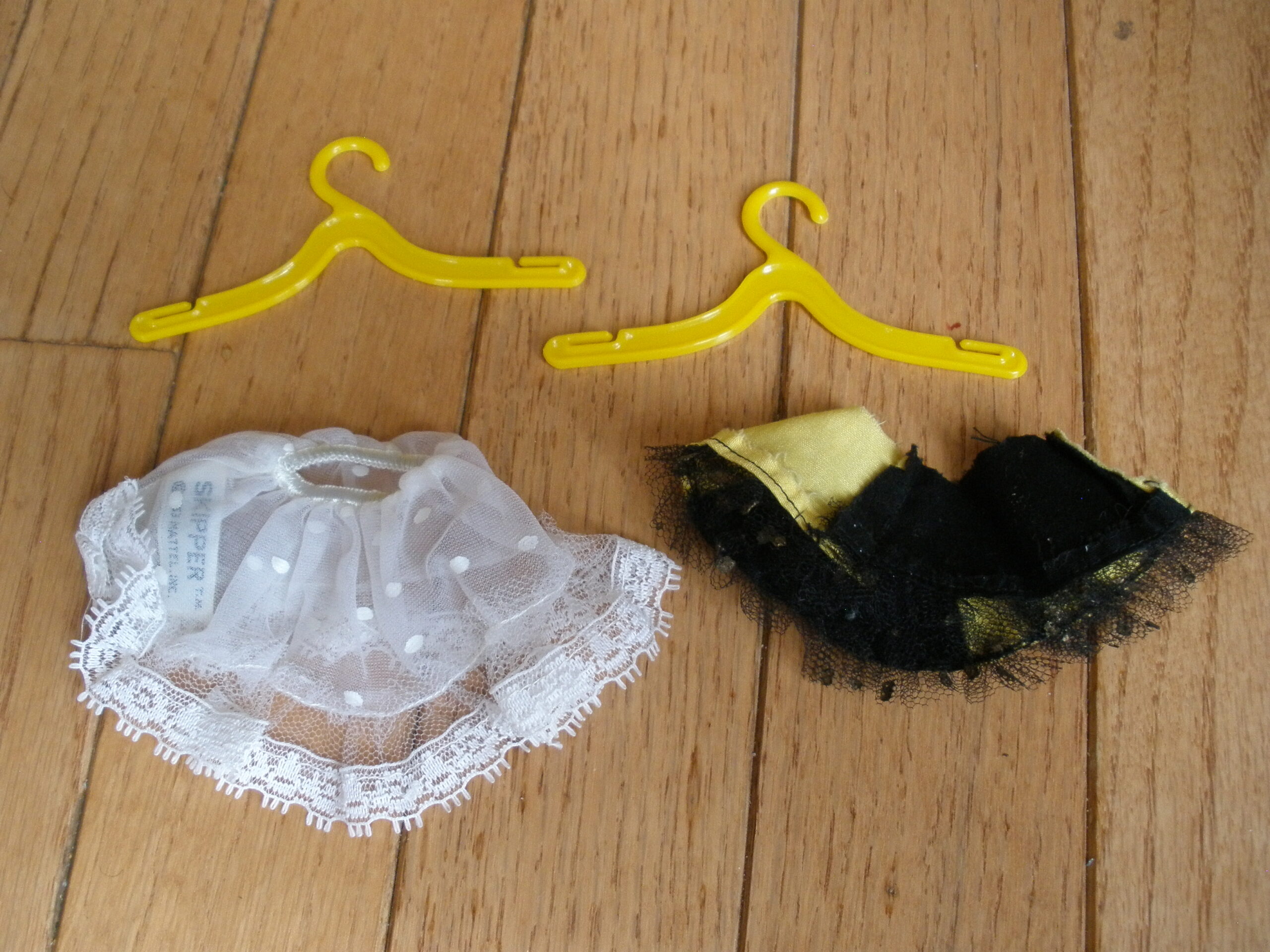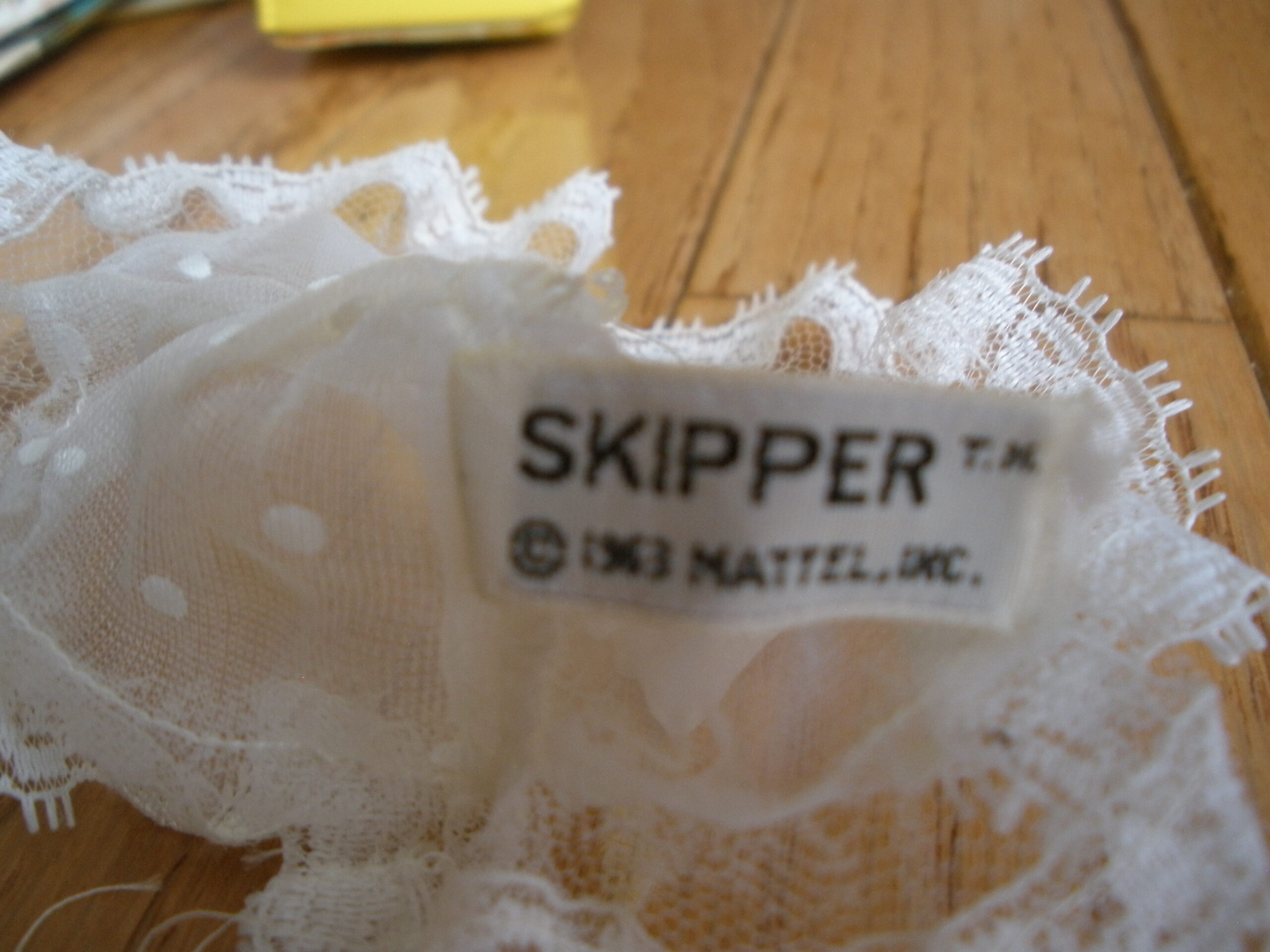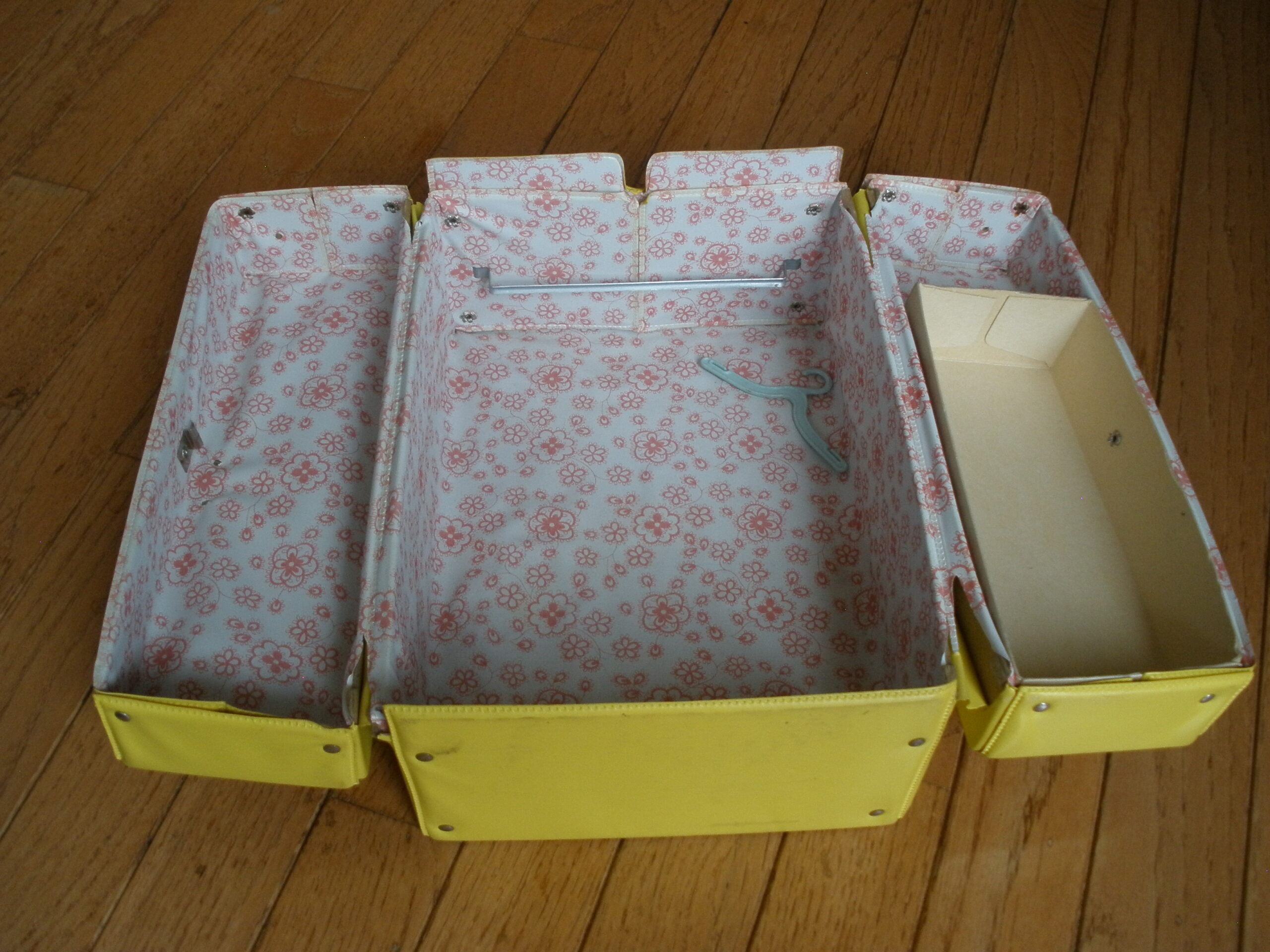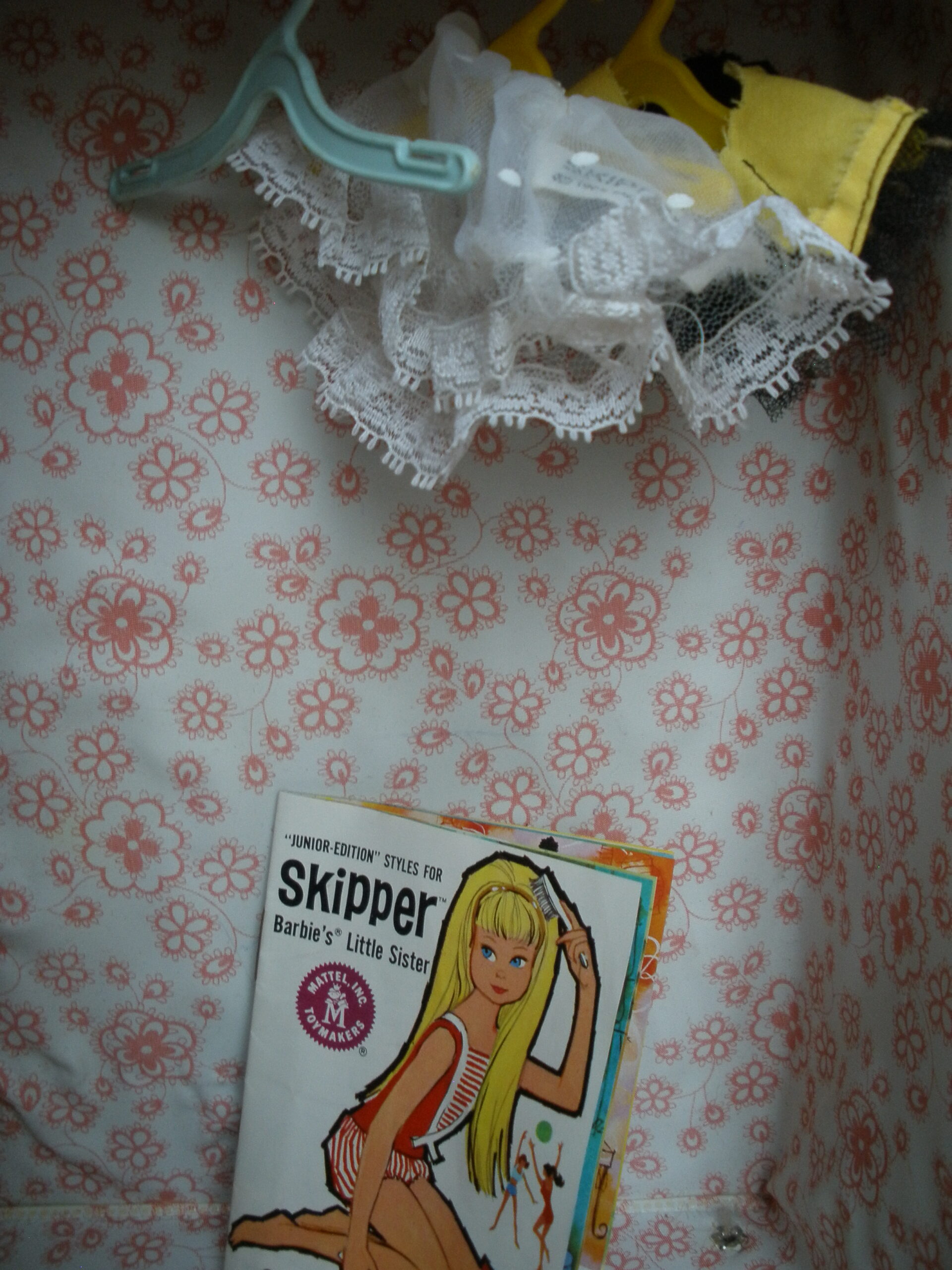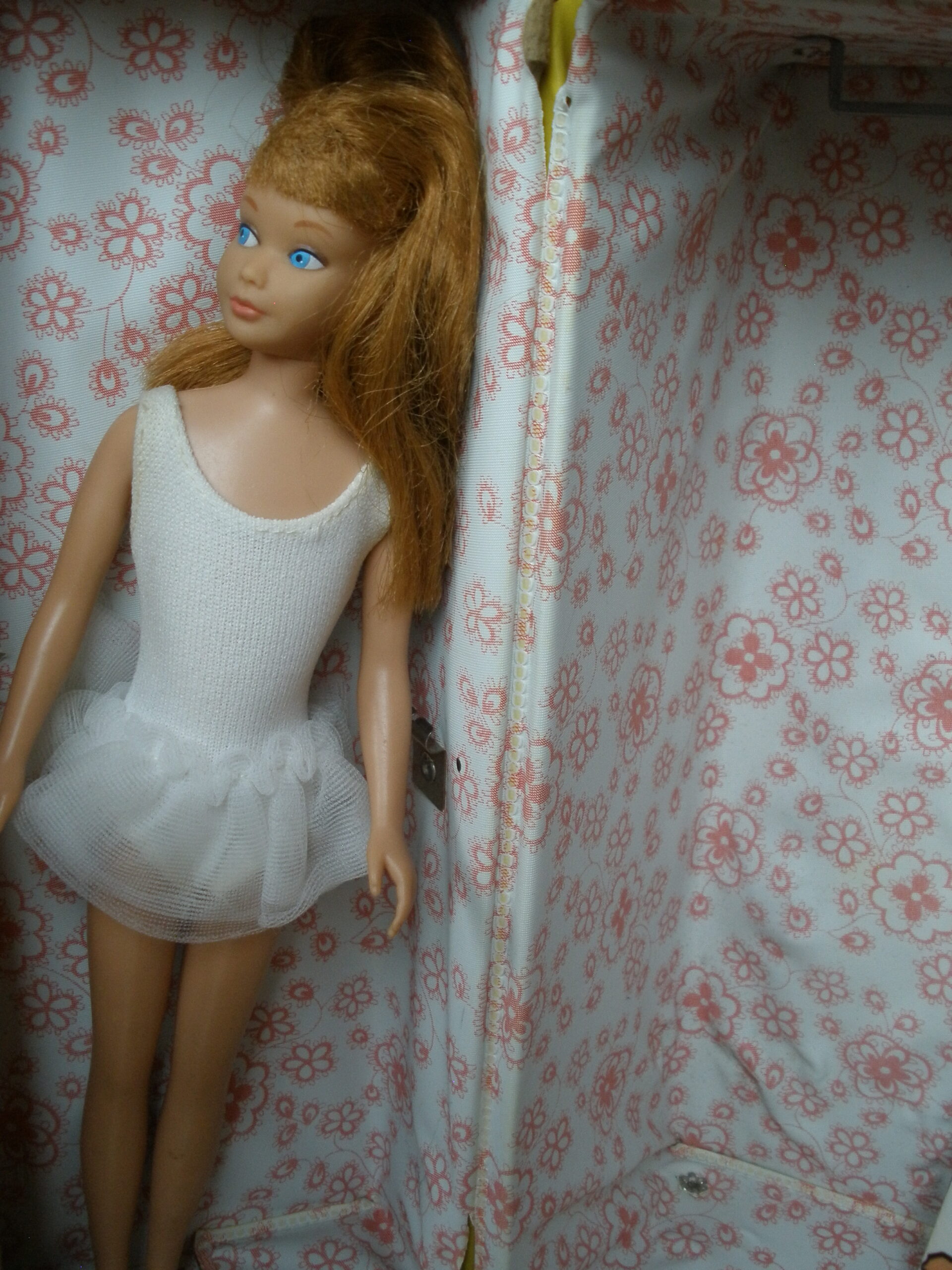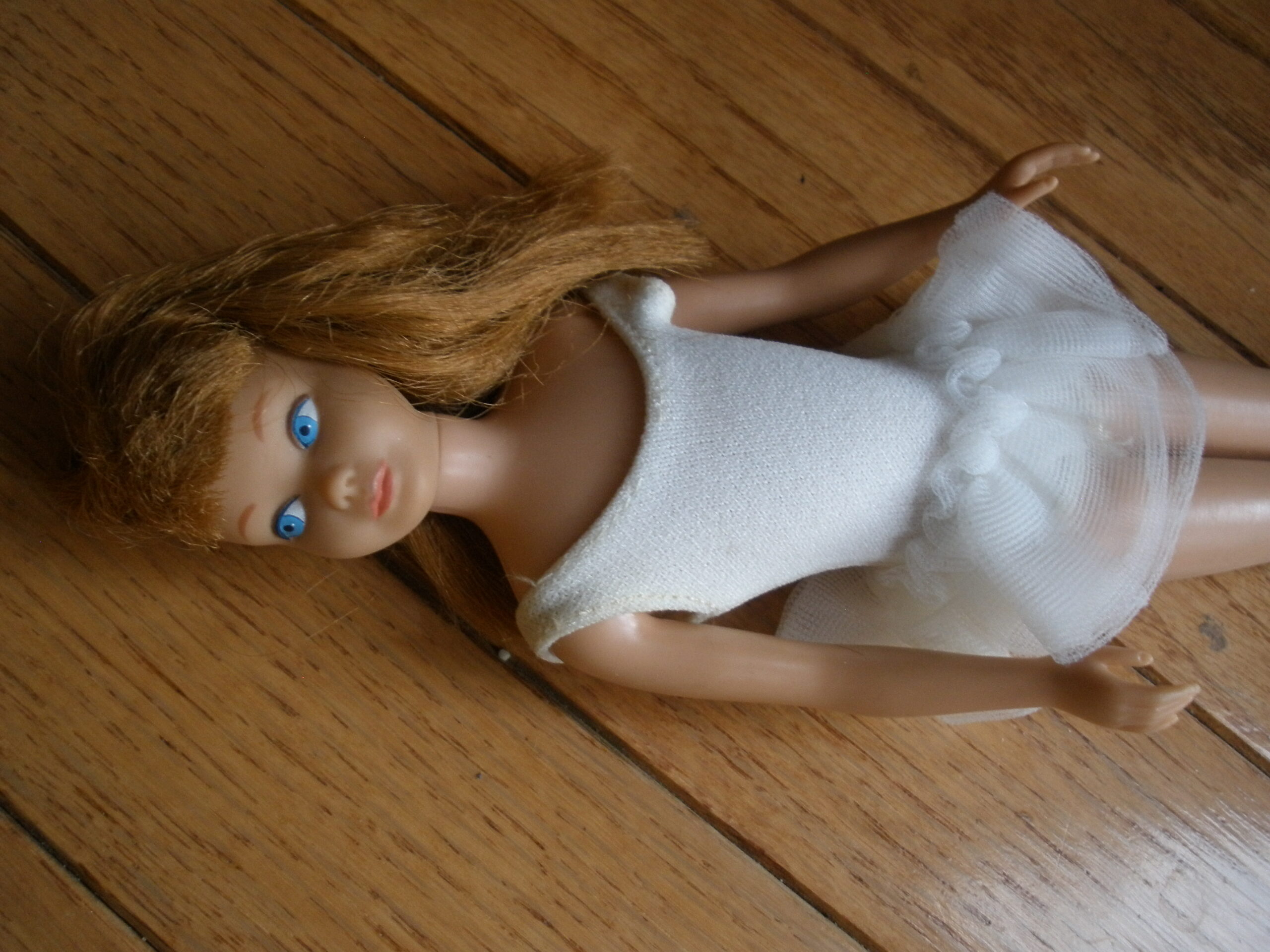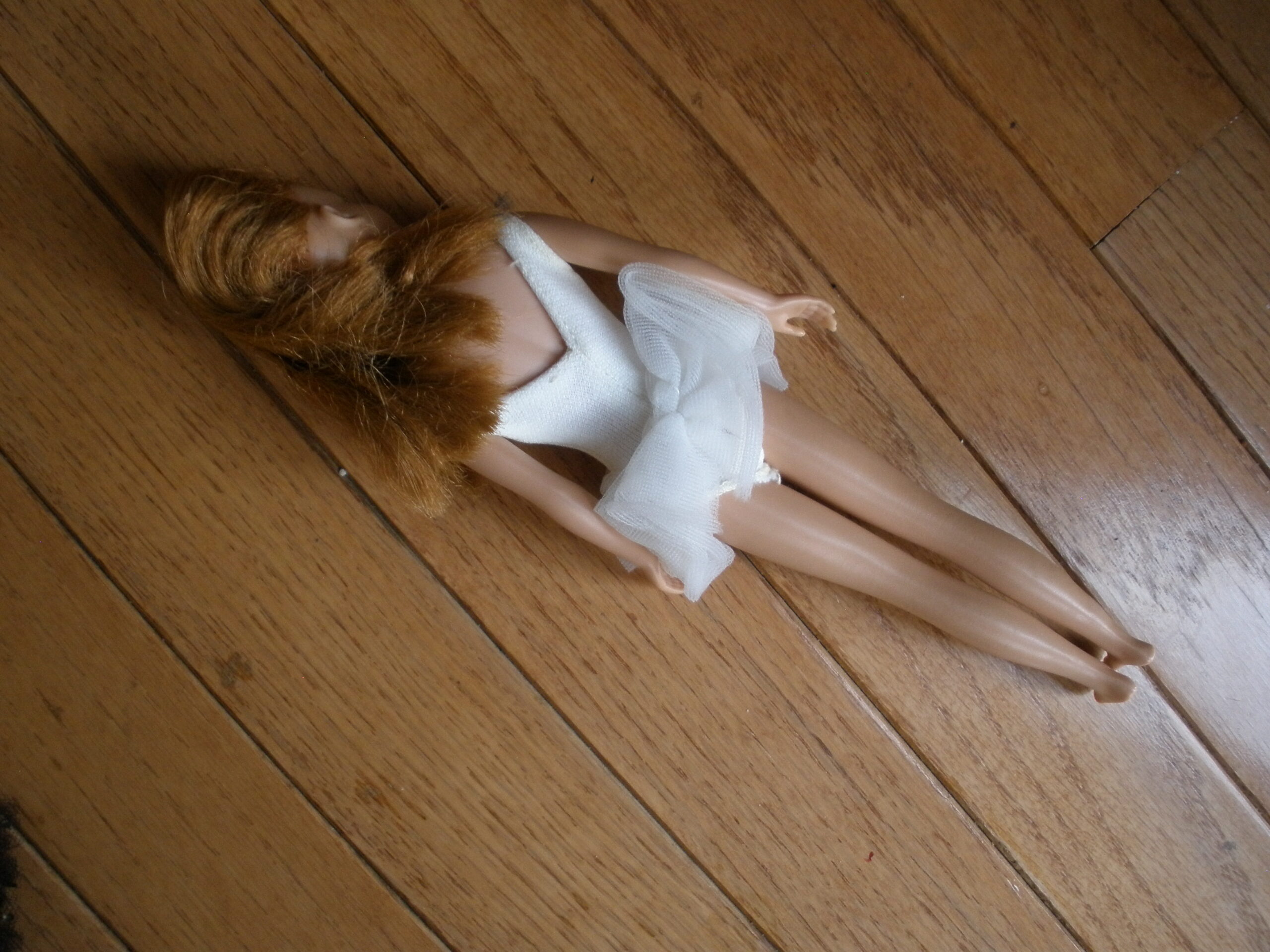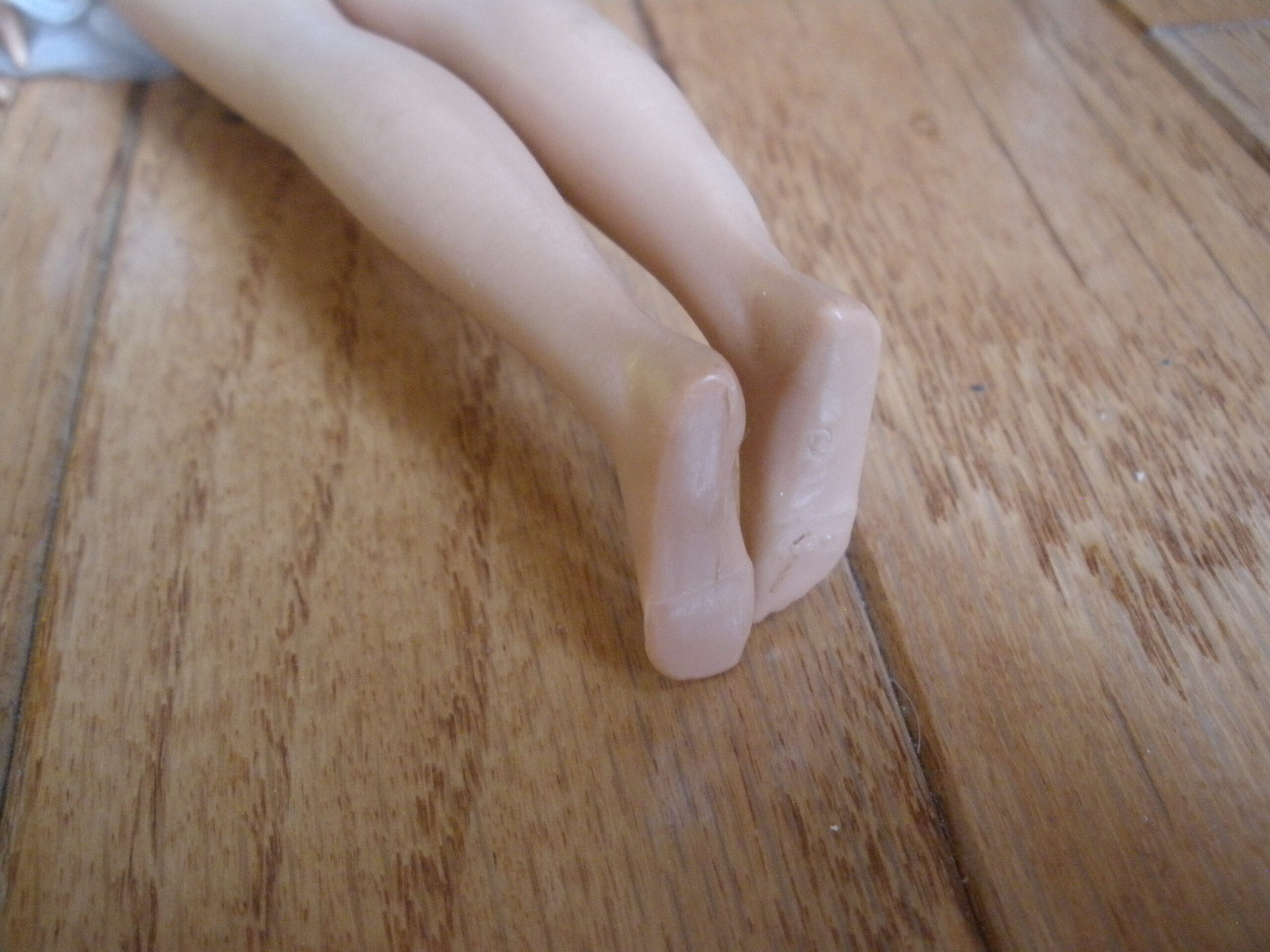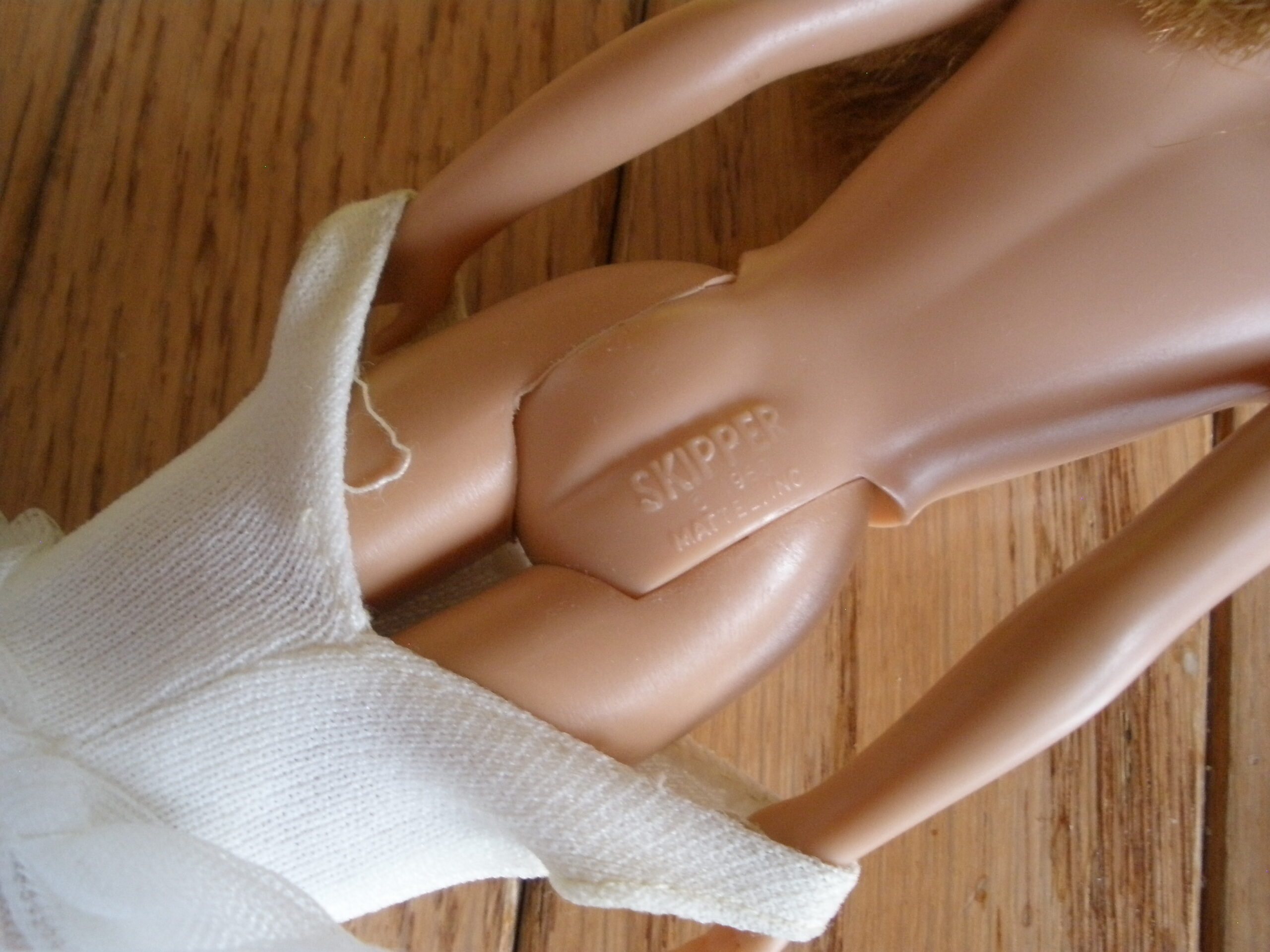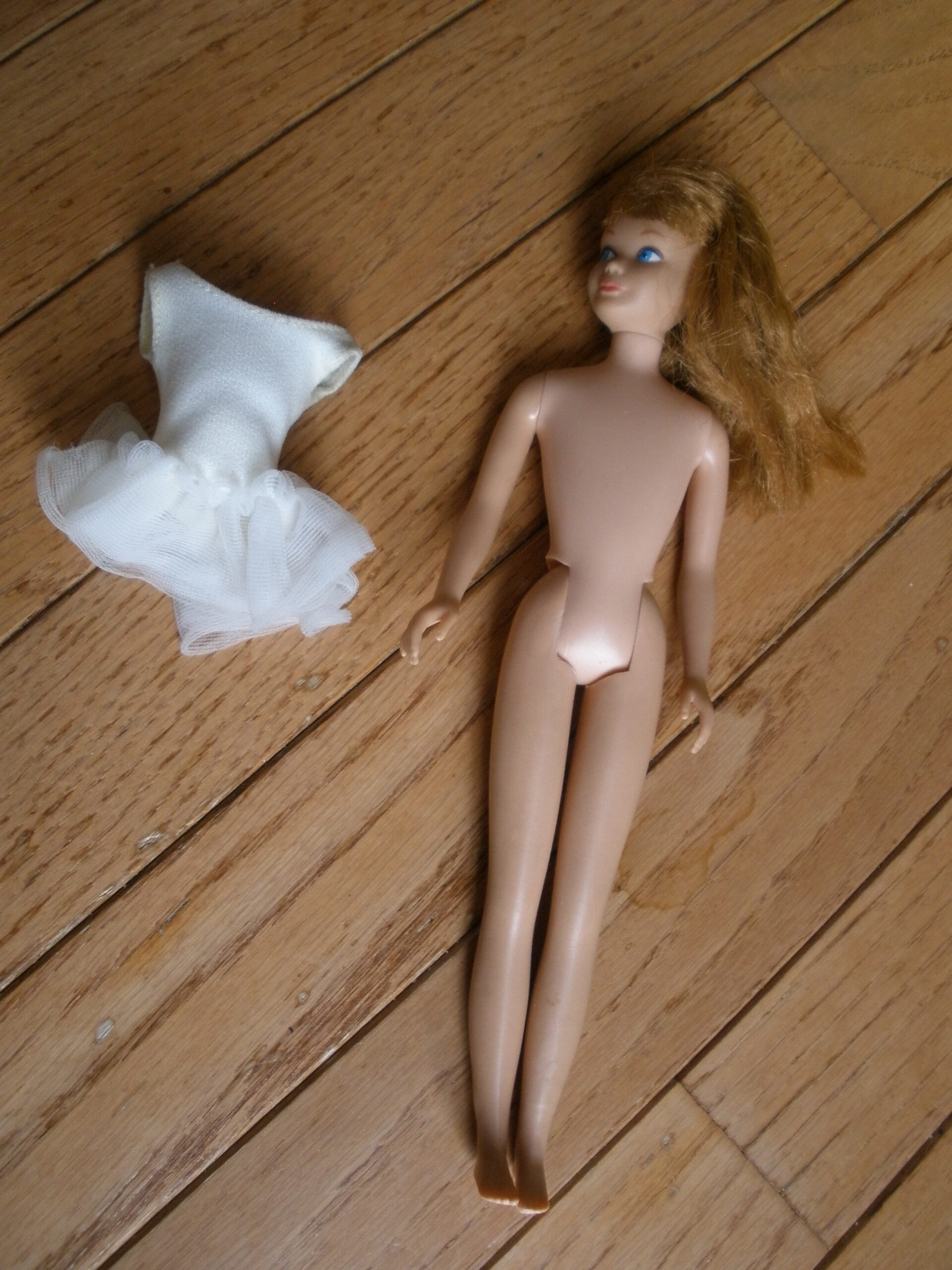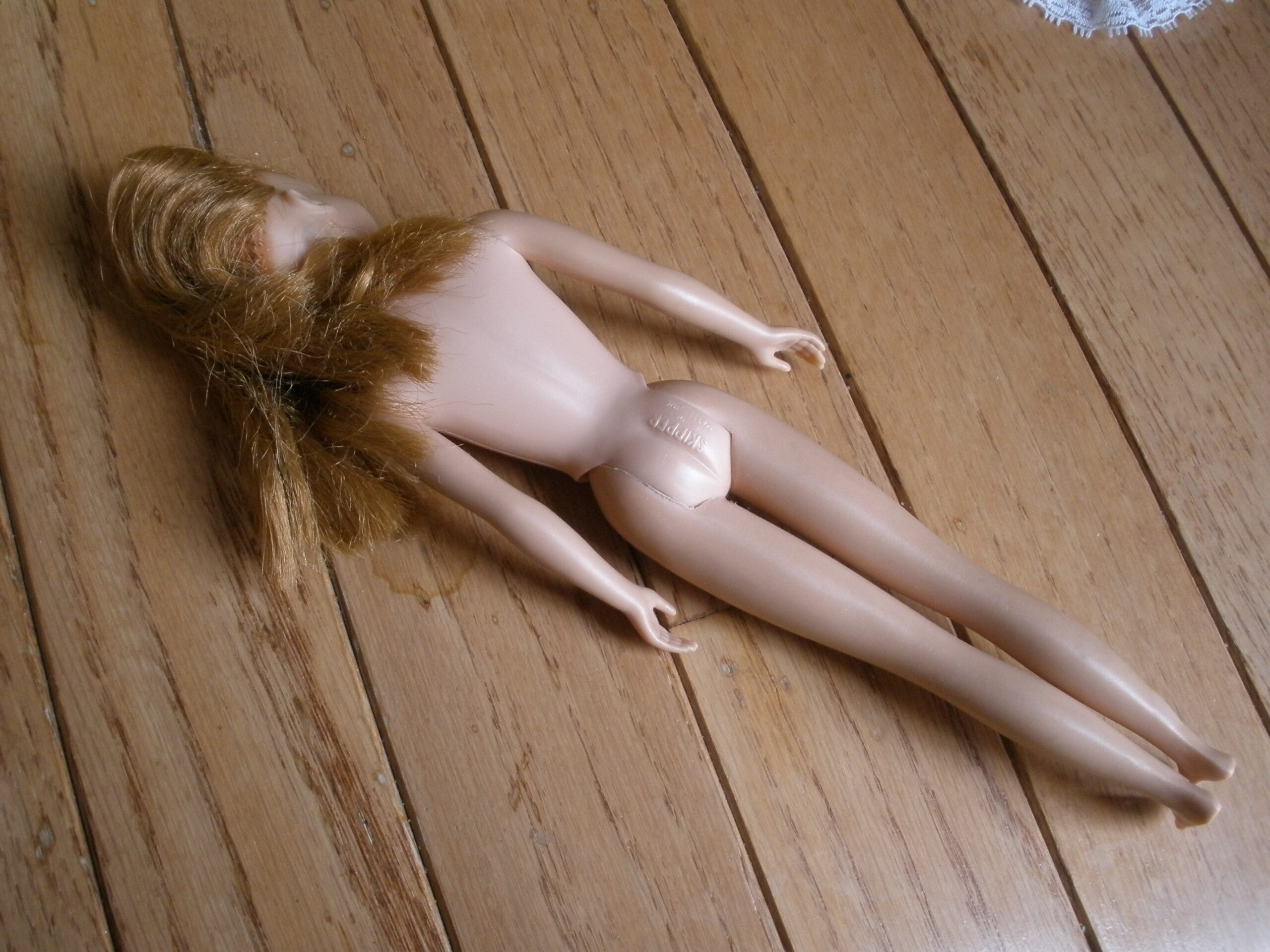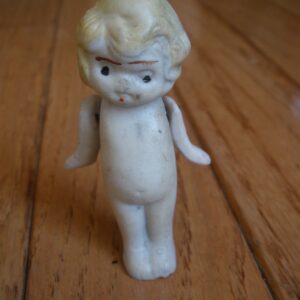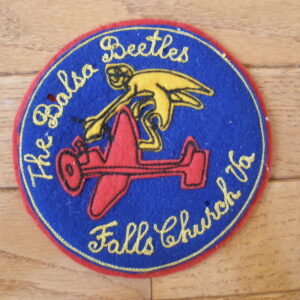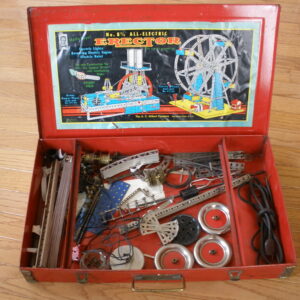For sale are several early 1964 BARBIE COLLECTIBLES which include a SKIPPER DOLL, Barbie’s little sister, some Skipper Outfits, a SKIPPER CLOTHING CATALOGUE and the SKIPPER DOLL CARRY CASE. All items were made by Mattel. A superb Skipper collection from the dawn of the founding of the Barbie empire. Take all items for $90.
The 1964 red-hair (also known as titian hair) SKIPPER DOLL has straight arms and legs that do not bend. The Skipper doll has painted blue eyes, coral lips and long straight rooted hair with bangs. The doll’s backside is marked “1 – SKIPPER 1963 MATTEL INC”. The doll’s foot is marked “JAPAN”. The first Skipper dolls had a tan toned skin. The doll for sale appears to be wearing the BALLET LESSONS #985 clothing accessory. One of the spare extra outfits appears to be from the UNDER-PRETTIES #985 set. The other item appears to be from the Masquerade Party Skirt # 1903.
The full color Skipper clothing fashion catalogue has a 1963 copyright date.
The yellow 1964 SKIPPER DOLL CARRY CASE displays well but the vinyl door hingers are a bit torn on the ends. Overall the case is in fair condition. The inside of the case has a clothing hanging rail, and part of a box to store clothing and accessories. The front of the case features the red haired Skipper. The case has a black carry handle and measures approximately 11 inches, by 7 inches, by 5 1/2 inches. A stylish collectible toy that displays well.
Barbie is a fashion doll manufactured by American toy company Mattel, Inc. and launched on March 9, 1959. Barbie has been an important part of the toy fashion doll market for over six decades and has been the subject of numerous controversies and lawsuits, often involving parodies of the doll and her lifestyle. The first Barbie doll wore a black-and-white zebra striped swimsuit and signature topknot ponytail, and was available as either a blonde or brunette. The doll was marketed as a “Teen-age Fashion Model”, with her clothes created by Mattel fashion designer Charlotte Johnson. The first Barbie dolls were manufactured in Japan, with their clothes hand-stitched by Japanese homeworkers. From 1959 until 1972, Barbies were made in Japan and have “Made in Japan” or “Japan” stamped on the bottom of their feet.
Barbie’s appearance has been changed many times, most notably in 1971 when the doll’s eyes were adjusted to look forwards rather than having the demure sideways glance of the original model.
Skipper was released by Mattel in 1964 to appeal to little girls for whom Barbie, Skipper’s older and more worldly sister, was too grown up. Barbie was a fashion plate, whose closet could be filled with no less than 22 different outfits in her debut year (1959) alone.


